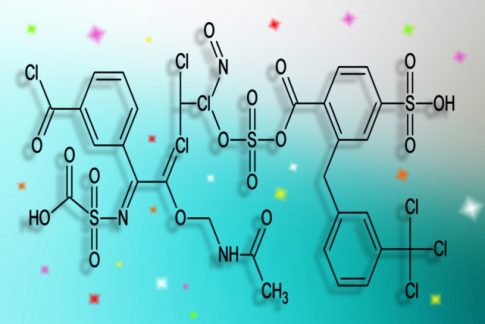Androgenetic alopecia (AGA) can be a serious problem for many men. Hair transplantation is one of the effective methods for treating AGA, and there are many success stories. In this article, we will introduce some successful cases of hair transplantation and explain in detail the process, effects, and post-surgery care.
What is hair transplantation?
Overview
Hair transplantation is a surgical procedure that transplants your own healthy hair into thinning areas. There are mainly two methods:
FUT method (Follicular Unit Transplantation): A method in which skin is cut into strips from the back of the head and transplanted into follicular units.
FUE method (Follicular Unit Extraction): A method in which hair follicles are harvested one by one from the back of the head and transplanted.
Merit
Natural finish: Since your own hair is used, you can expect a very natural finish.
Permanent solution: Transplanted hair usually continues to grow permanently.
Effective: The hair is transplanted directly to the thinning area, so it is effective immediately.
Success story 1: Case of a man in his 30s
Patient profile
Age: 35 years old
Progression of AGA: Norwood classification type 5 (widespread thinning of hair on the crown and frontal region)
Treatment method: FUE method
Process
Counseling and diagnosis: After examination by a specialist, hair transplantation using the FUE method was determined to be optimal.
Pre-surgery preparation: Check your health condition and check the donor area at the back of your head before surgery.
Surgery: Hair follicles are harvested from the back of the head and transplanted to areas where hair is thinning. Approximately 3,000 grafts (hair follicle units) were transplanted.
Postoperative care: After surgery, regular check-ups and scalp care were performed.
Result
3 months after surgery: New hair begins to grow and thinning areas become less noticeable.
6 months after surgery: Hair density increases and appearance greatly improves.
1 year after surgery: The result looks natural and the patient is very satisfied.
Comment
The patient said, “I was nervous before the surgery, but I am very happy with the results. I have regained my confidence.”

Success story 2: Case of a man in his 40s
Patient profile
Age: 42 years old
Progression of AGA: Type 4 of the Norwood classification (moderate hair thinning on the frontal and parietal areas)
Treatment method: FUT method
Process
Counseling and diagnosis: After examination by a specialist, hair transplantation using the FUT method was determined to be optimal.
Pre-surgery preparation: Check your health condition and check the donor area at the back of your head before surgery.
Surgery: A strip of skin is cut from the back of the head, divided into individual hair follicles, and transplanted to areas with thinning hair. Approximately 2500 grafts were transplanted.
Postoperative care: After the surgery, wound care and scalp care were performed.
Result
3 months after surgery: New hair begins to grow and thinning areas become less noticeable.
6 months after surgery: Hair density increases and appearance greatly improves.
1 year after surgery: The result looks natural and the patient is very satisfied.
Comment
The patient said, “Hair transplant surgery using the FUT method was more effective than I expected.People around me responded well to it, and I have become more confident in myself.”
Success story 3: Case of a man in his 50s
Patient profile
Age: 52 years old
Progression of AGA: Norwood classification type 6 (widespread thinning of hair on the frontal and parietal areas)
Treatment method: FUE method
Process
Counseling and Diagnosis: After examination by a specialist, it was determined that the FUE method was the most suitable for a wide range of thinning hair areas.
Pre-surgery preparation: Check your health condition and check the donor area at the back of your head before surgery.
Surgery: Hair follicles are harvested from the back of the head and transplanted to areas where hair is thinning. Approximately 4000 grafts were transplanted.
Postoperative care: After surgery, regular check-ups and scalp care were performed.
Result
3 months after surgery: New hair begins to grow and thinning areas become less noticeable.
6 months after surgery: Hair density increases and appearance greatly improves.
1 year after surgery: The result looks natural and the patient is very satisfied.
Comment
The patient said, “I had a big problem with thinning hair over a wide area, but hair transplant surgery using the FUE method dramatically improved it.I have become more confident in my appearance and my quality of life has improved.” Masu.
Post-operative care for hair transplantation
Precautions after surgery
Scalp care: After surgery, it is important to keep your scalp clean. Wash your hair gently using the appropriate shampoo as directed by your doctor.
Regular check-ups: After surgery, you will see a specialist regularly to check the condition of the transplanted hair.
Medications: If necessary, medications such as minoxidil or finasteride may be used to support hair growth.
Improving lifestyle habits
Nutritionally balanced diet: Eat a diet rich in vitamins and minerals to maintain the health of your hair.
Moderate exercise: Promotes blood circulation and provides nutrients to hair follicles.
Stress management: Stress has a negative impact on hair growth, so manage stress through relaxation techniques and hobbies.
In conclusion
Hair transplantation is a very effective method for treating AGA. Through success stories, many men have regained their confidence and improved their quality of life. Proper post-operative care and maintaining a healthy lifestyle will keep the transplanted hair healthy for a long time. If you are suffering from AGA, it is important to consult a specialist and find the treatment that is best for you.
AGA treatment at Hiro Clinic
AGA (Androgenetic Alopecia) is a disease called male pattern baldness, which progresses if left untreated, so early treatment is necessary. The causes of AGA vary depending on the individual, but it is not a disease that cannot be treated.
Hiro Clinic uses cutting-edge regenerative medicine technology to treat AGA.
Our specialized doctors will suggest appropriate treatment methods tailored to each individual and will do their best to support your concerns.









